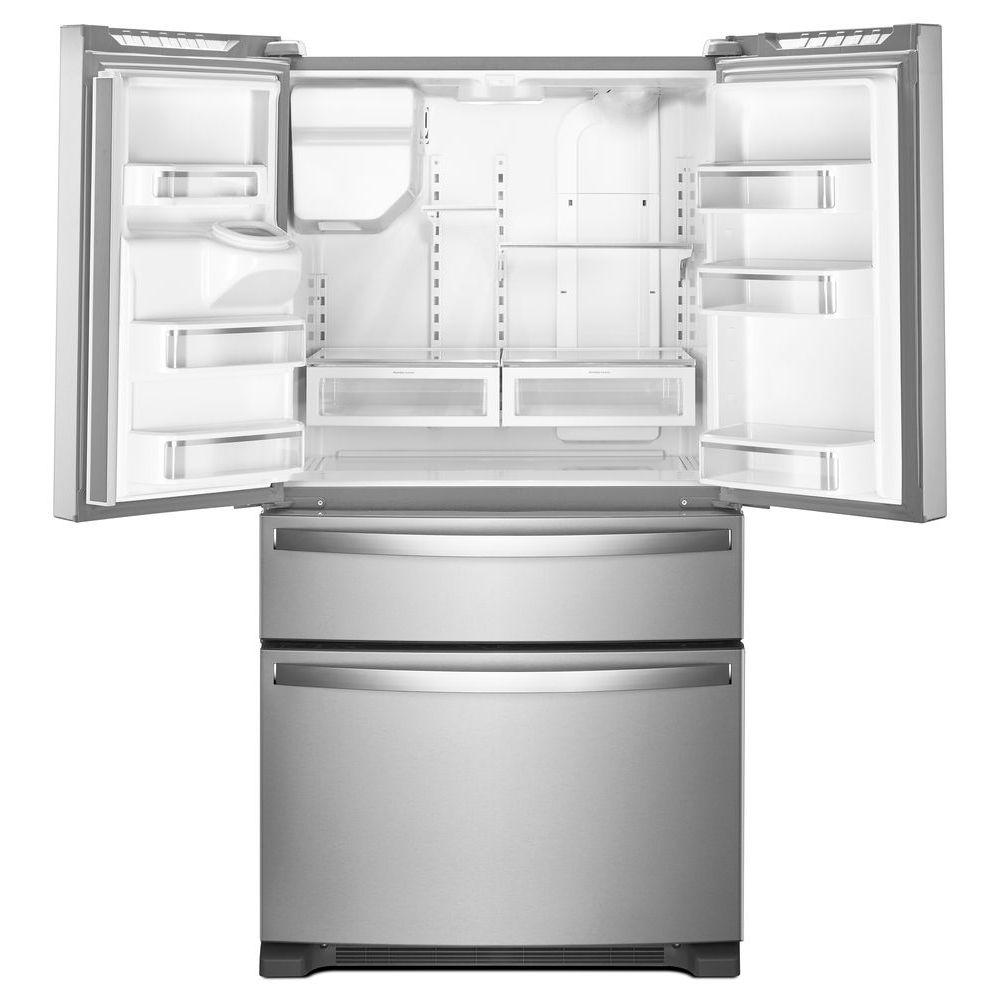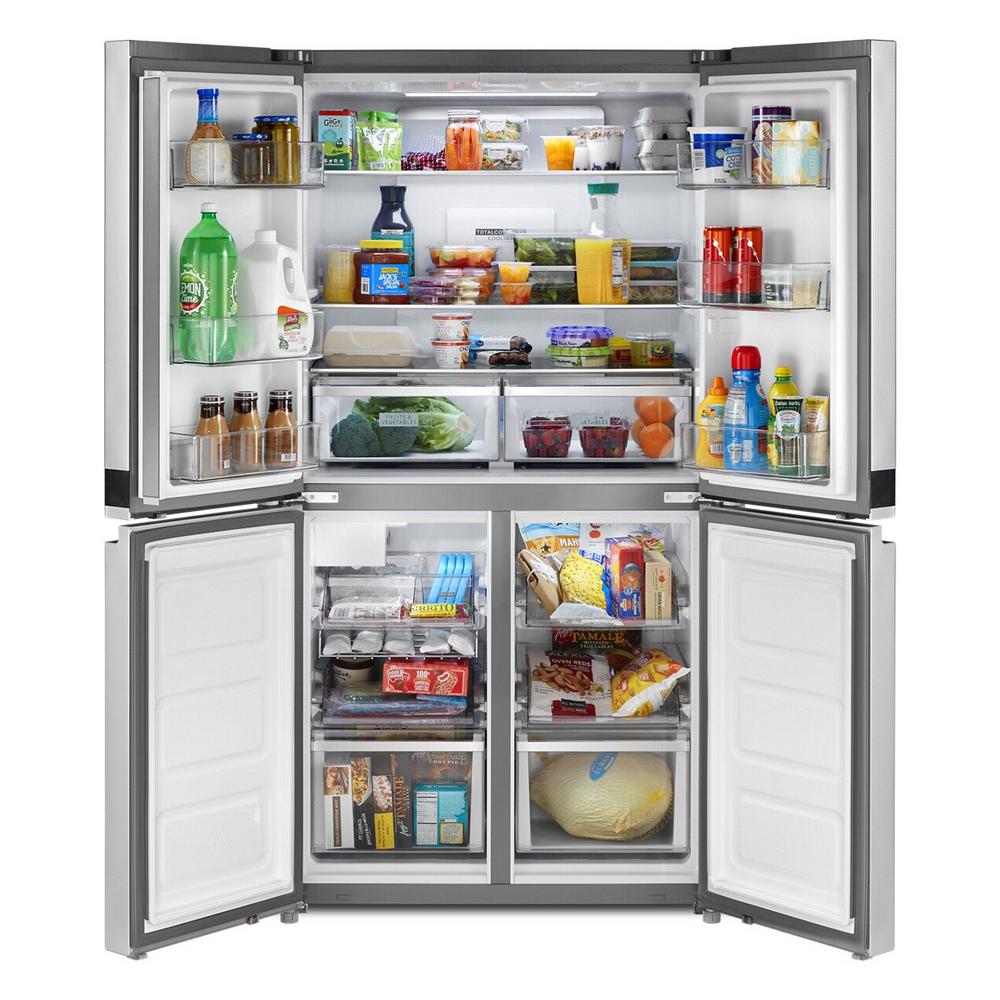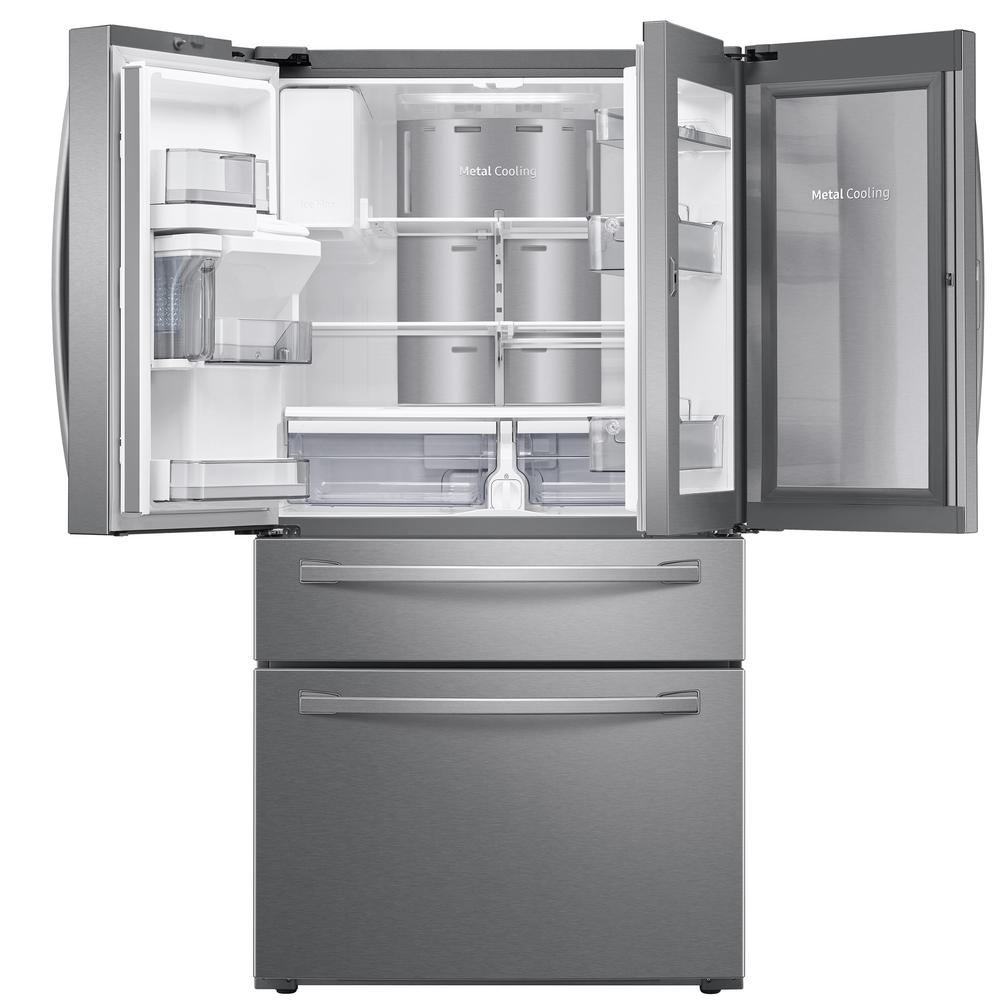GE 27.0 cu. ft. French Door Refrigerator in Fingerprint Resistant Stainless Steel, ENERGY STAR
Equipped with a quick space shelf for added storage. Spill-proof shelves provide easy clean up. Food stays fresh with turbo cool setting.
At GE Appliances, we bring good things to life, by designing and building the world’s best appliances. Our goal is to help people improve their lives at home by providing quality appliances that were made for real life. Whether it’s enjoying the tradition of making meals from scratch or tackling a mountain of muddy jeans and soccer jerseys, GE Appliances are crafted to support any and every task in the home.
-
Fingerprint resistant stainless – Easily wipe away smudges and fingerprints for a look that’s always sparkling clean
- 27.0 cu. ft. capacity – Easily store large or bulk food items with three full-width shelves and large capacity
- Internal water dispenser – Delivers filtered water with one touch
- Factory-installed icemaker with water filtration system – Refrigerator comes ready to automatically create filtered ice
- LED lighting – Find exactly what you’ve been looking for under crisp, clear lighting
- Spill-proof shelves – A variety of shelf configurations provide additional options for food storage
- Two humidity-controlled drawers and full-width drawer – Create the right environment for keeping fruits and vegetables fresh, while easily storing wider items like a party platter or a sheet cake
- Quick Space shelf – Quickly slides out of the way to make room for tall items
- Turbo Cool and Turbo Freeze settings – An extra boost of cold air restores interior to set temperature for optimum food freshness
- Internal controls with actual-temperature display – Eliminate the guesswork of temperature setting with actual degrees displayed digitally
- Advanced water filtration uses XWF replacement filter – Reduces trace pharmaceuticals from water and ice ( Removes 98% of ibuprofen, atenolol, fluoxetine, progesterone and trimethoprim. These pharmaceuticals are not necessarily in all users’ water
- Gallon door storage – Deep bins handle large containers in the door and free up valuable shelf space
- 2-level freezer storage baskets – Baskets allow easy access to frozen foods
- Door alarm – Enjoy peace of mind knowing the refrigerator door is never left open
- Approximate Dimensions (in.) – 69-7/8 in. H x 35-3/4 in. W x 35-7/8 in. D
- Limited 1-year entire appliance warranty
Additional information
| Product Depth x Height x Width (in.) | 35.88 x 69.88 x 35.75 |
|---|---|
| Refrigerator Width (In.) | 35.75 |
| Depth (Excluding Handles) | 33.38 |
| Depth (Including Handles) | 35.88 |
| Depth With Door Open 90 Degrees (In) | 43.75 |
| Height to Top of Door Hinge (in.) | 69.88 |
| Height to Top of Refrigerator (in.) | 68.63 |
| Certifications and Listings | Energy Star,UL Listed |
| Manufacturer Warranty | Limited 1-year entire appliance warranaty |






by Mee
I love that this has the water dispenser on the inside and plenty of room and shelves with multiple configurations for all of my needs.
by Russell
Love how it looks in my kitchen. Works very well in my kitchen.
by Maria
Love my new refrigerator! Much improved features and just like the previous GE Profile refrigerator, I know I will enjoy this refrigerator for more than 10 years.
by Jay
Great fridge with lots of room. Works perfectly. Couldn’t be more happy with it.
by Hiker
We replaced our side by side with this French door model and couldn’t be happier. Great capacity and seems to be solidly built
by Kahn
The cubic feet listed for this refrigerator is no joke; it has so much room to store your products. The side compartments are much bigger than they look; the product photos are true to their word. The freezer also has a lot of room and my wife and I love that it pulls out. If you’re looking for a freezer without the water and ice dispenser on the front, this is the one to get without a doubt.
by John
Is deep to put a lot of groceries I love it and I would buy it again.
by Tony
Just delivered and it is awesome! Water dispenser in hidden so we have more room inside! Makes ice too!!!
by Nessa
We replaced a side by side that we’ve had for almost 10 years and couldn’t be happier. Love the adjustable shelving and the sliding half shelf to allow for taller items. Super quiet, like the water dispenser tucked inside the door, and the ice maker works well too. The only negative, if you can call it one, is the big “deli drawer” at the bottom feels a little cheap and doesn’t slide very smoothly. But overall very happy.
by Praise
So roomy, love the fingerprint resistant a lot of room inside